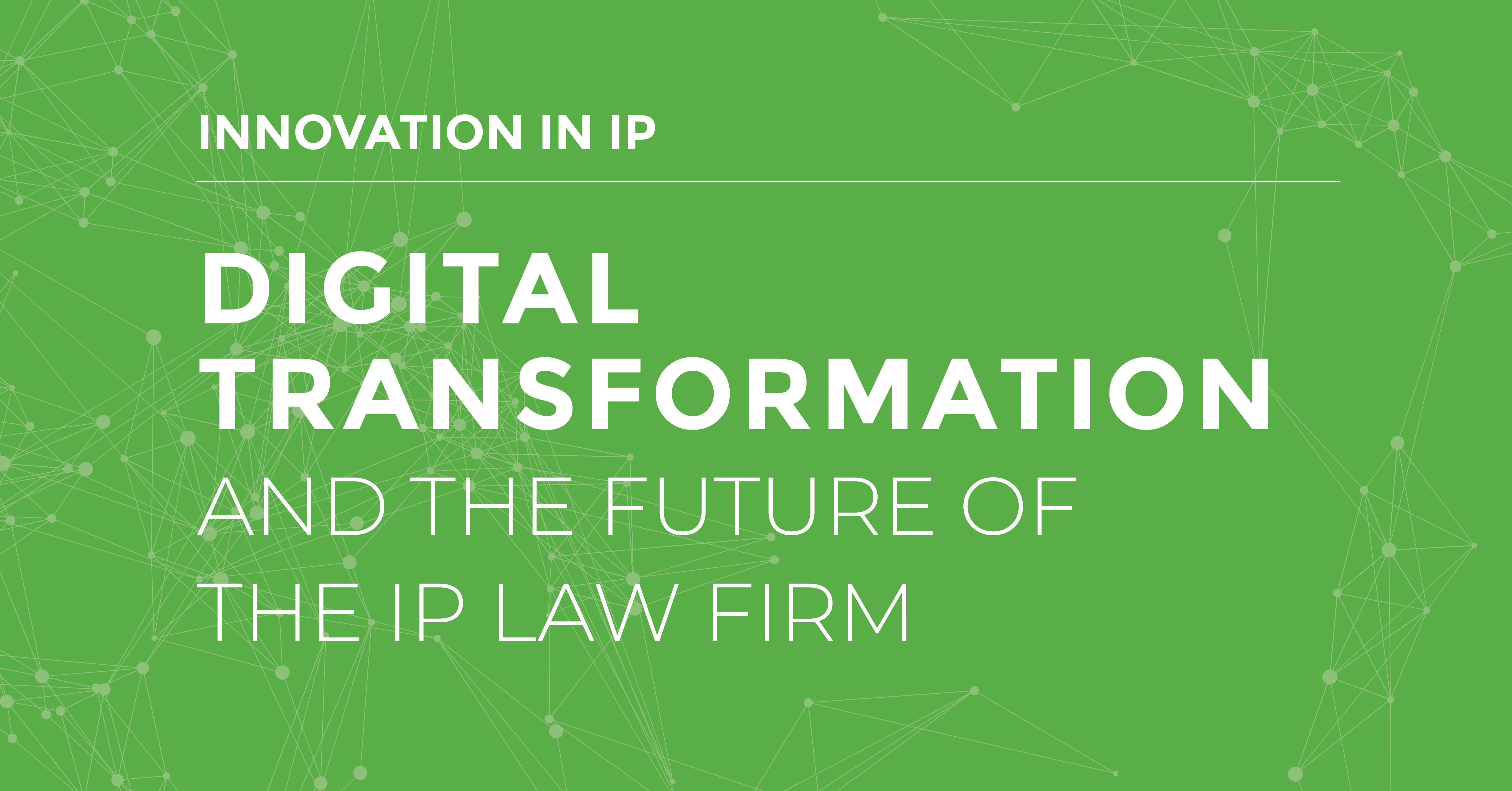Digital Transformation and the Future of the IP Law Firm

In a previous article, we discussed how SLW has innovated over decades to become one of the leaders in intellectual property and patent prosecution. We have harnessed technology and automation to allow the firm to provide the highest value for our clients. Now, SLW continues its discussion about ways to maximize value and focus on the most important elements of our work. We foresee the following elements as imperative for the “Firm of the Future.”
Anything that can be automated must be automated.
The fees an IP firm can charge have been under pressure for many years. One could argue that that the pressure has leveled off in the past few years, but generally, the trend line is level to down. More and more, clients refuse to pay for human processing of paperwork (receiving a document, interpreting it, actioning out) unless it involves attorney analysis or drafting. At the same time, inflation is rising and things like rent, paralegal salaries, staff salaries, and insurance costs continue to rise, putting constant price pressure on the firm to find ways to do more with less. In addition, most patent attorneys are engineers or other science professionals who have other career options, so there is upward pressure on salaries from outside the profession. Thus, if costs are rising and clients are unwilling to shoulder their share of these increasing costs, a firm must find other ways to maintain profitability.
As some firms embrace automation of paralegal work and others do not, a price imbalance emerges. As an example, one firm with automated workflows, such as automated docketing, can afford to charge less for expensive paralegal support services and offset this reduction in charge with increased productivity per employee. Other firms who continue to do things the old way, in other words, throwing more labor or paralegals at a specific workload, effectively price themselves out of the market with higher costs. SLW continually has a steady stream of the best-in-class attorneys attracted to our firm as we can charge less, redistribute savings to the entire firm and create a flywheel effect where the cream truly rises to the top at the most economical of firms; all while maintaining a full book of business and making our clients happy.
Automation Driving a Smaller Pool of Professionals Focused on Manual Tasks
Building off of automating all possible manual tasks for economic survival, the net effect lessens the demand for paralegal professionals to perform purely rote tasks. This is in essence a one-way valve that can eventually eliminate the need for professionals to perform routine IP-related paralegal tasks.
Efficient Ways to Organize and Access Information
Historically, patent firms had very limited access to information as it was all paper-based documentation. In the 1980s, an attorney would go to the patent office library, accessing “stacks” of patents in book boxes and maybe go the extra mile to look at more files in the examiner’s office. You can imagine that there are only so many documents in those small boxes, perhaps 300-400 maximum. In today’s age, we can analyze 10,000 patents in searching for prior art and that is literally impossible to do in a paper-based format, a human interpretation format or even having access to all that paper in the first place.
There are much more efficient and productive ways to conduct prior art search, such as semantic search and Natural Language Processing. We can organize things to conduct prior art search that is dynamic in nature and keeping up with changing information, as well as patent applications to assess on an ongoing basis to make the right judgement call over time. SLW strategically manages large databases to analyze millions of patents, applications, and prior art through heat mapping to see directionally what is missing to digest, interpret and act upon based upon many criteria. This is speeding up the process and creating a system to organize and access information that ultimately leads to better results for the client each and every time.
Virtualization of the Firm
The modern-day workplace has many remote workers, and in our case, we had the first attorneys utilizing dial-up modems and internal networks for them to do their entire job from a remote location. This allowed us to attract talent without needing an entirely central location to do that work. This remote location virtualization also has lower overhead costs as a percentage with a growing attorney base. In addition to remote attorneys, firms of the future must look at virtualizing other non-core functions through “renting” back office or administrative functions.
Focus on High Value Work
The firm of the future will find more efficient and automated ways to deal with non-essential tasks. The other side of the automation coin is strategic focus on high-value technical and legal knowledge. In patent prosecution, that equates to deep domain and subject matter expertise to position patent applications successfully, as well as legal matter expertise in dealing with rejection letters. The art, skill and high-value work comes into play with drafting a strong patent application as a core offering, utilizing human creativity outside of tasks that can be automated.

Utilizing Big Data Tools to Analyze Vast Datasets
SLW has created automated docketing for 90% of its US docketing, and international docketing is well on its way to full automation as well. In addition, SLW is a leader in aggregating millions of patent matters for robust analysis of renewals as well as patent applications. In addition to efficient management of that dataset, SLW has tools to look at heat maps for directional information or a score. This again is an advantage in time, process and overall efficiency, looking at the greatest number of concepts, matching up against other references, and deciding from a patentability perspective what to pursue. We can see the differences, quantify those differences and make the most educated decision on what to do next. Traditionally and with most IP firms, a patent examiner cites three things and the IP attorney decides how to get around those cited three things. In perhaps five years down the road, you discover five other patents that have reference which thereby eviscerates your patent. The cost of those IP lawyers and bloated human-heavy infrastructure forces that attorney to only work around those three things cited by the patent office as they can only afford to work on those three things. The future of the future, with automation and efficient ways of dealing with large volumes of data, can overcome those barriers and provide better results for the clients over the long term.
All tools are not perfect, they need to be intuitive and not overcomplicate an already difficult process. Tools need to be constantly adapting systemically such to bring in new information in near real time so as you can make the right decision at that specific point in time. SLW has those tools that can reaffirm criteria to move forward with confidence in a systematic, data-driven process.
Subscription Services for Non-Core Services
These non-core functions in the virtual firm, including subscription-based automated docketing, mean the future firm does not need to build those infrastructures internally. They only need to ensure they are managed properly for quality as an external function. This allows a firm to focus on its core value-added services.
System Communication and Integration
The systems from USPTO, international patent offices, docketing automation and platforms need to be able to communicate and integrate for overall interoperability. Clients want choice of tools and these systems working soundly together will benefit all vendors and clients, acting as a rising tide raising all boats in speed and efficiency.
In order to provide an integrated system and workflow, SLW is both leading and calling upon industry to create a unified ecosystem or “commonly accepted rules” in regard to system integration, specifically API data interchange between various technology solutions. We are spearheading consensus under what we call the OpenLegalAPI mandate. If we look at the recent evolution of software engineering workflows and tools, big data containerization in things like Docker was specifically created to move code and data sets, and repurpose them without massive rework from legacy systems to other systems. This container and these open source tools and microservices need a way to integrate into other systems, and that is through standard APIs (application programming interface). According to Wikipedia, API is a set of clearly defined methods of communication among various components. A good API makes it easier to develop a computer program by providing all the building blocks, which are then put together by the programmer.

The reasons for the OpenLegalAPI mandate are clear.
- API accessibility: On demand or real-time data sharing and speeding up the entire automation technology stack from beginning to end. This allows data integration between docketing systems and vendor; the ability to make “real-time” calls to pull and push data between docketing systems and vendor platforms; and the ability to upload documents into docketing systems via automation.
- API standardization: Reduce custom integration work as interoperability and communication standards are in place.
- Integrated products and services benefit firms: Maximizing efficiencies through artificial intelligence and automation minimizes costly delays and speeds up legal services for a step change in productivity.
- Avoid vendor lock-in or lock-out: Proprietary solutions that do not standardize integration with other systems are trying to bundle and stack their preferred solution. Customers have legacy systems and existing workflows; they require modular, decouled systems and an ecosystem of choice to benefit all.
Click here to learn more about OpenLegalAPI.
 Steve Lundberg
Steve Lundberg
Principal & Chief Innovation Officer
Back to All News

